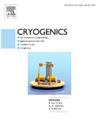低温冲击载荷下sn基钎料合金韧脆转变行为及断裂机制研究
IF 2.1
3区 工程技术
Q3 PHYSICS, APPLIED
引用次数: 0
摘要
随着深空探测和航空航天电子器件的发展,极端低温环境下焊点的可靠性已成为一个严峻的挑战。本研究系统研究了Sn-3.0Ag-0.5Cu (SAC305)、Sn-37Pb和Sn-90Pb三种典型钎料合金在- 196℃至50℃温度范围内的冲击性能和断裂行为。Charpy冲击试验结合宏观/微观断口分析表明:(1)SAC305在0 ~ 10°C之间经历了韧脆转变温度(DBTT),在- 196°C表现为完全脆性断裂,解理面特征类似“冰糖”形态;(2) Sn-37Pb在- 50℃~ - 25℃范围内表现出韧性-脆性混合断裂特征,低温下表现为准解理面和撕裂脊;(3)由于富pb相的塑性优势,Sn-90Pb即使在- 196℃也能保持韧性断裂,而微观组织对温度没有明显的依赖性。理论分析表明,Sn的低温脆性(bct结构)主导了SAC305和Sn- 37pb的断裂行为,而高Pb含量(fcc结构)保留了Sn- 90pb在极低温下的塑性变形能力。该工作为深空电子器件的焊料选择和抗脆化设计提供了重要的指导。本文章由计算机程序翻译,如有差异,请以英文原文为准。
Study on ductile-to-brittle transition behavior and fracture mechanisms of Sn-based solder alloys under cryogenic impact loading
With the advancement of deep-space exploration and aerospace electronic devices, the reliability of solder joints under extreme cryogenic environments has become a critical challenge. This study systematically investigates the impact properties and fracture behaviors of three typical solder alloys, Sn-3.0Ag-0.5Cu (SAC305), Sn-37Pb and Sn-90Pb, over a temperature range of −196 °C to 50 °C. Charpy impact tests combined with macro/micro-fractographic analysis reveal that: (1) SAC305 experiences a ductile-to-brittle transition temperature (DBTT) between 0 °C and 10 °C, exhibiting complete brittle fracture at −196 °C with characteristic cleavage facets resembling “rock-candy” morphology; (2) Sn-37Pb shows a DBTT between −50 °C and −25 °C, displaying mixed ductile–brittle fracture features with quasi-cleavage planes and tear ridges at cryogenic temperatures; (3) Sn-90Pb maintains ductile fracture even at −196 °C due to the plastic superiority of Pb-rich phases, with no significant temperature dependence of the microstructure. Theoretical analysis demonstrates that the cryogenic brittleness of Sn (bct structure) dominates the fracture behavior of SAC305 and Sn-37Pb, while the high Pb content (fcc structure) preserves the plastic deformation capability of Sn-90Pb under extreme low temperatures. This work provides crucial guidance for solder selection and anti-embrittlement design in deep-space electronic devices.
求助全文
通过发布文献求助,成功后即可免费获取论文全文。
去求助
来源期刊

Cryogenics
物理-热力学
CiteScore
3.80
自引率
9.50%
发文量
0
审稿时长
2.1 months
期刊介绍:
Cryogenics is the world''s leading journal focusing on all aspects of cryoengineering and cryogenics. Papers published in Cryogenics cover a wide variety of subjects in low temperature engineering and research. Among the areas covered are:
- Applications of superconductivity: magnets, electronics, devices
- Superconductors and their properties
- Properties of materials: metals, alloys, composites, polymers, insulations
- New applications of cryogenic technology to processes, devices, machinery
- Refrigeration and liquefaction technology
- Thermodynamics
- Fluid properties and fluid mechanics
- Heat transfer
- Thermometry and measurement science
- Cryogenics in medicine
- Cryoelectronics
 求助内容:
求助内容: 应助结果提醒方式:
应助结果提醒方式:


